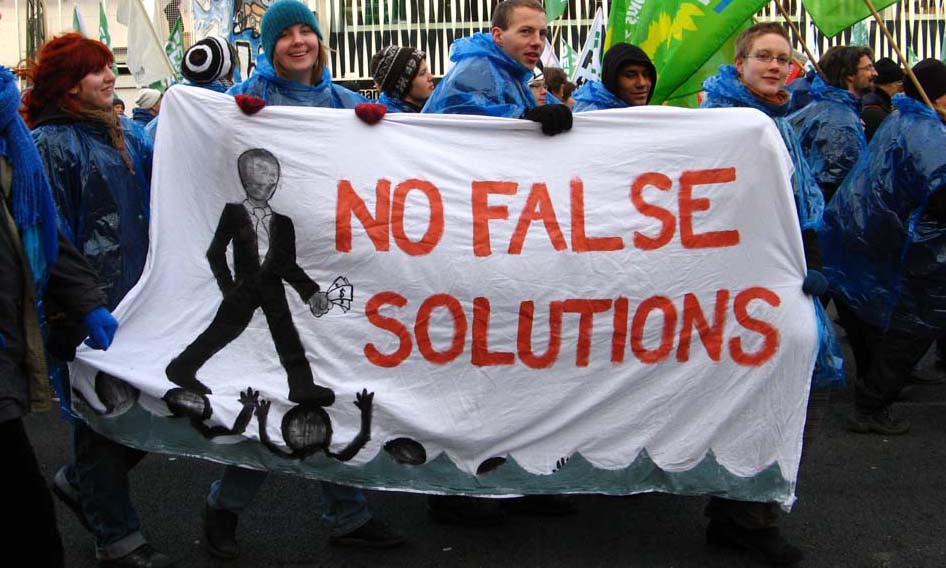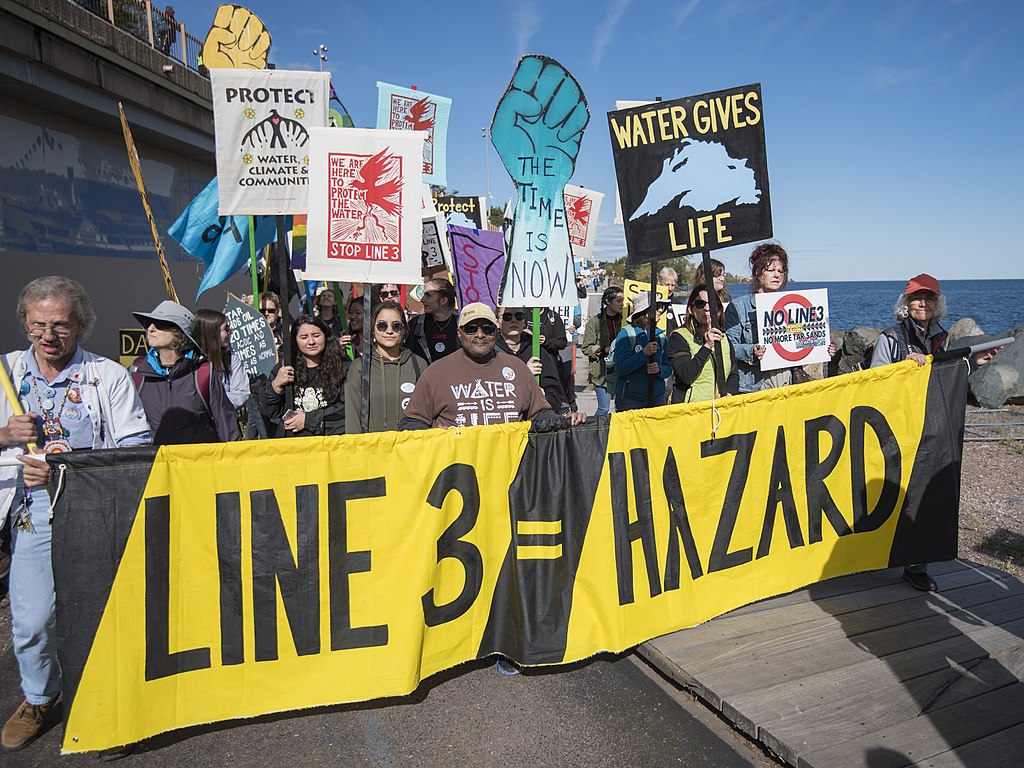
Collapse Total: New Tactics and Strategies for the Climate Justice Movement
Editor’s note: From the 15th to the 22th of November, in different countries, the Glasgow Agreement is articulating mobilizations, protests and blocks against one of the biggest oil & gas companies in the world: Total.
This story first appeared in Common Dreams.
By João Camargo
The social alliance to take on global capitalism must be global, radical, popular, tactically, and strategically focused, while at the same time flexible and imaginative.
Is climate collapse close to being averted? How close are we to winning? Is the climate justice movement organized to win? Are current strategies and tactics enough? What else do we need to try and how fast? The Glasgow Agreement, People’s Climate Commitment, is a global platform of grassroots and social movements for climate justice. It is planning on going after French multinational Total simultaneously all around the world this November, in an action called Collapse Total, and organising climate justice caravans in all continents next Spring.
As fossil fuel investment and projects jump from country to country, as their destruction-ridden profit keeps on building on the collapse of the climate, tactics and strategies on the global scale must be tried.
The climate justice movement is pursuing the task of taking on the entire global fossil industry, that is, global capitalism. Yet, as it remains mostly a group of dispersed, uncoordinated, and loosely connected movements, how can this task become achievable? Fossil capitalism has its fingers everywhere, in each government, every press agency, every media outlet and network, in anything that money can buy. It articulates its strategies, coordinates its wars and dictates the policies that have been dooming us to climate collapse. They have known about climate change since the 1960’s. They have coordinated for decades to spread misinformation to mislead Humanity and cut the essential action to prevent climate chaos.
The climate justice movement needs a lot of imagination to break the mold of its own business as usual, like most social movements that have gotten used to normality, procedure, method and repetition. To overcome these challenges, the movement needs to permanently test new tactics and strategies.
Collapse Total is focusing on one of the many and influential tentacles of fossil fuel capitalism. From the 15th to the 22th of November, in different countries, the Glasgow Agreement is articulating mobilizations, protests and blocks against one of the biggest oil & gas companies in the world: Total. This French multinational is neck deep into promoting the climate collapse, with mass investments in new fossil fuel projects, oil and gas fields, pipelines, offshore drilling, fracking destruction, tar sands and the destruction of lives and the livelihoods of millions of indigenous communities, peasants and every landscape they set their eyes on. They have spent billions to make trillions. They have hired armies of lobbyists, mercenaries, and political campaigners to keep oil and gas flowing, in whichever situation. They have known about their impact on the climate since at least 1971, yet have always promoted denialism. They are the glowing example of the fossil fuel multinational, dooming us while hiring public relations’ experts. It has recently changed its name to Total Energies, changed its logo and announced a net zero target for 2050. Yet, Total it is planning to drill around fifty exploratory oil and gas wells this year alone (in Nigeria, Ivory Coast, Namibia, South Africa, Kenya, Lebanon, Oman, USA, Bulgaria, Bolivia, two in Angola, two in Papua New-Guinea, two in Norway, two in Malaysia, two in Mexico, three in Cyprus, three in the UK, four in Brazil, four in Myanmar, six in Guyana and eight in Suriname).
Total is one of the biggest historical contributors to the climate crisis, with higher emissions than most countries in the world. With the pushback from climate protests in the last years, they have greenwashed themselves to try and look like something else, while pushing for EACOP, a new massive pipeline in Uganda and Tanzania, increasing the production oil and gas in war-devastated Iraq, prompting a military dictatorship in Myanmar or receiving full state protection in Northern Mozambique, while local communities are devastated by climate change and gas-related terrorism. They maintain their support for fracking in Vaca Muerta, Argentina, for tar sands in Canada and oil and gas all around. They never stopped. They never will. Unless they are forced to stop.
As fossil fuel investment and projects jump from country to country, as their destruction-ridden profit keeps on building on the collapse of the climate, tactics and strategies on the global scale must be tried.
Has a similar tactic to this been tried before? Shell Must Fall is probably the referential for going after a single company, with a strong focus on Royal Dutch Shell’s AGM in the Netherlands and its shareholders, with a focus on disrupting it to prevent the company from proceeding with its regular business by disrupting its administrative order. Collapse Total proposes to act in a broader sense, by going after Total’s infrastructures, headquarters, offices, banks and gas stations, with different tactics that fit local conditions.
This is, of course, only a small step, as there are dozens of other companies willing and able to take over Total’s place that need to be dismantled, and after this action, a thorough evaluation of its impact must be made. Will it be something to replicate, to adjust or to be written off the movement’s parafernalia of tools? Does it contribute to building up the movement and to weaken fossil capitalism? Only experience will provide the answer.
On the other hand, in the Spring of 2022, a great climate justice caravan will travel in different continents, crossing territories in the frontlines of the climate crisis and the climate justice struggles to directly connect to communities. Much like great historical political caravans—the Salt March, the Selma to Montgomery march, the World March of Women—this caravan will walk for hundreds of kilometers and talk to thousands of people, to bring the climate crisis and its connections to the capitalist system of destruction and oppression to the fore. It will signal top-emitting infrastructures in its path, pointing out the culprits for the current situation. It will look to broaden alliances, campaigns, connecting struggles and peoples to achieve an ever broader scope of action and a vision for the future.
The social alliance to take on global capitalism must be global, radical, popular, tactically and strategically focused, while at the same time flexible and imaginative. It must try, try and try until it finds the tools to win. It is quite an enormous task, to take on global capitalism, and it will need to be taken one step at a time, but there’s a deadline. We need to win before we are out of time.




